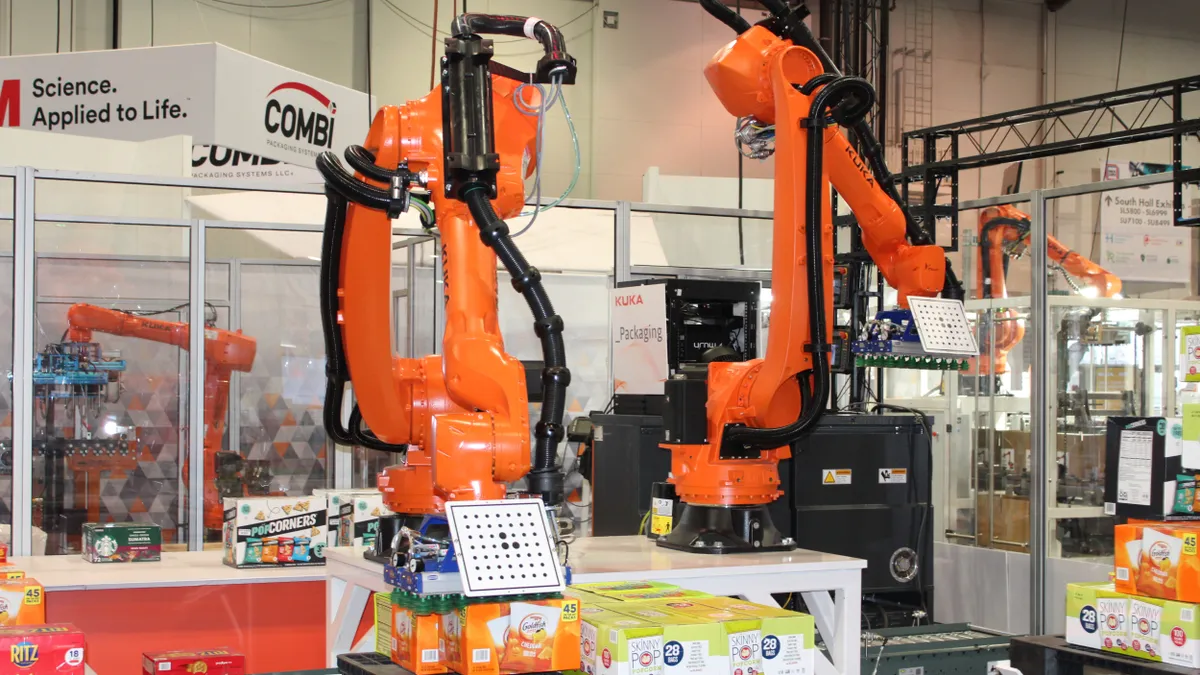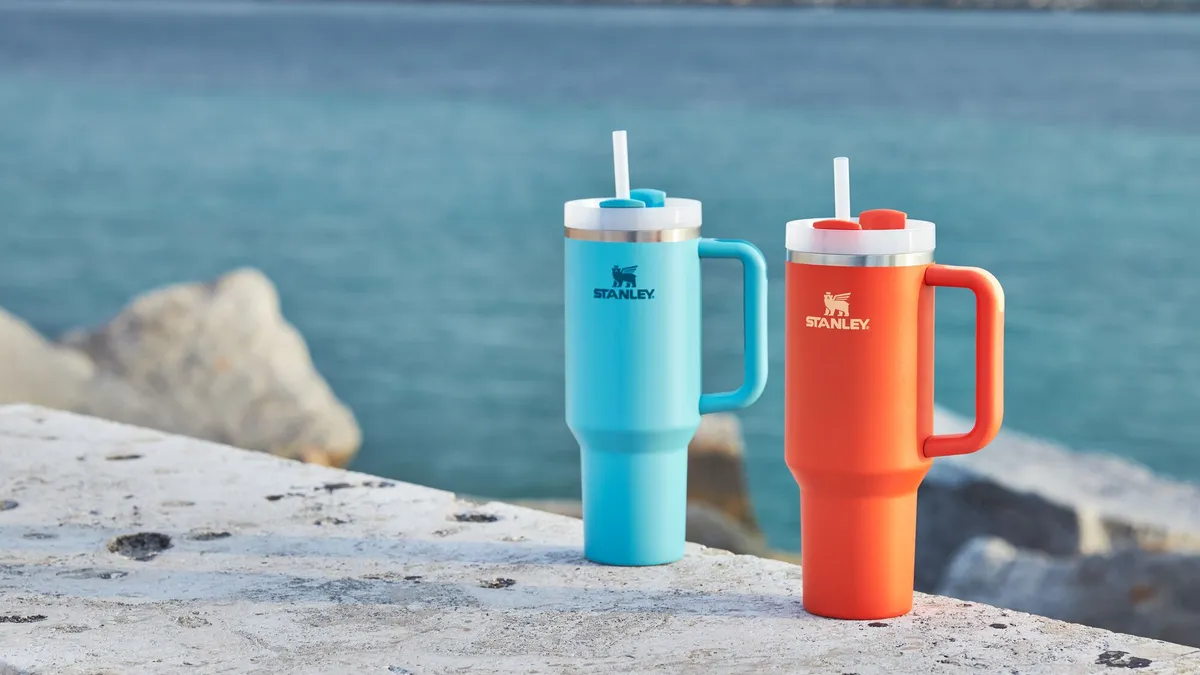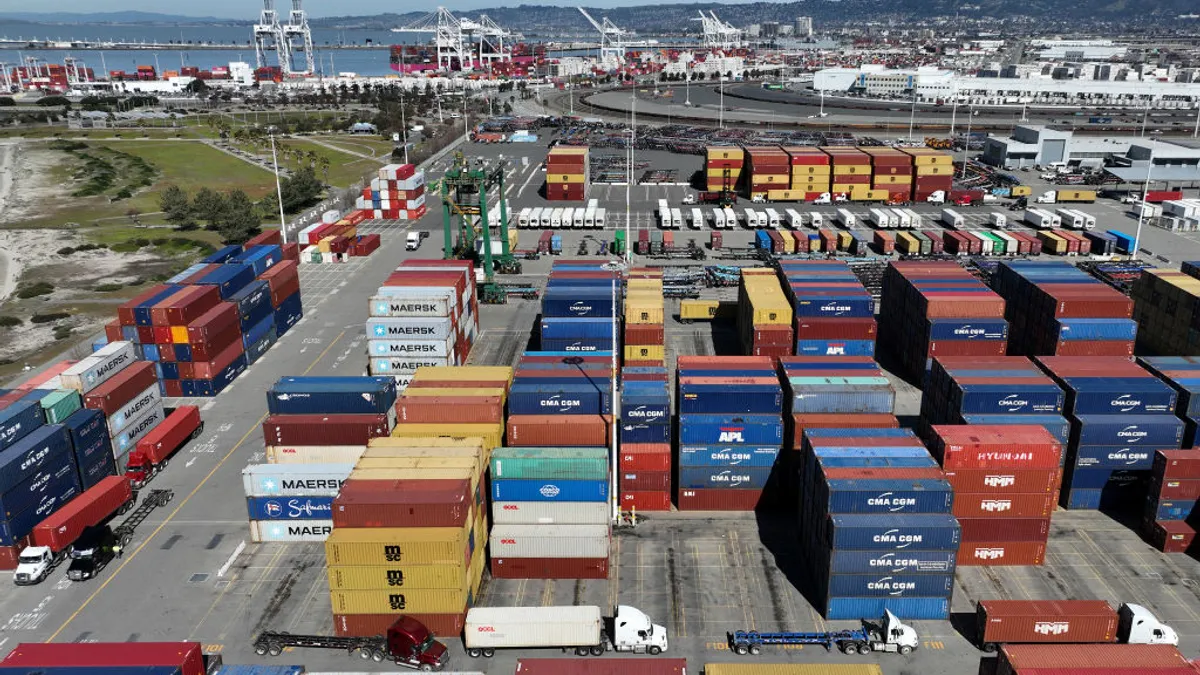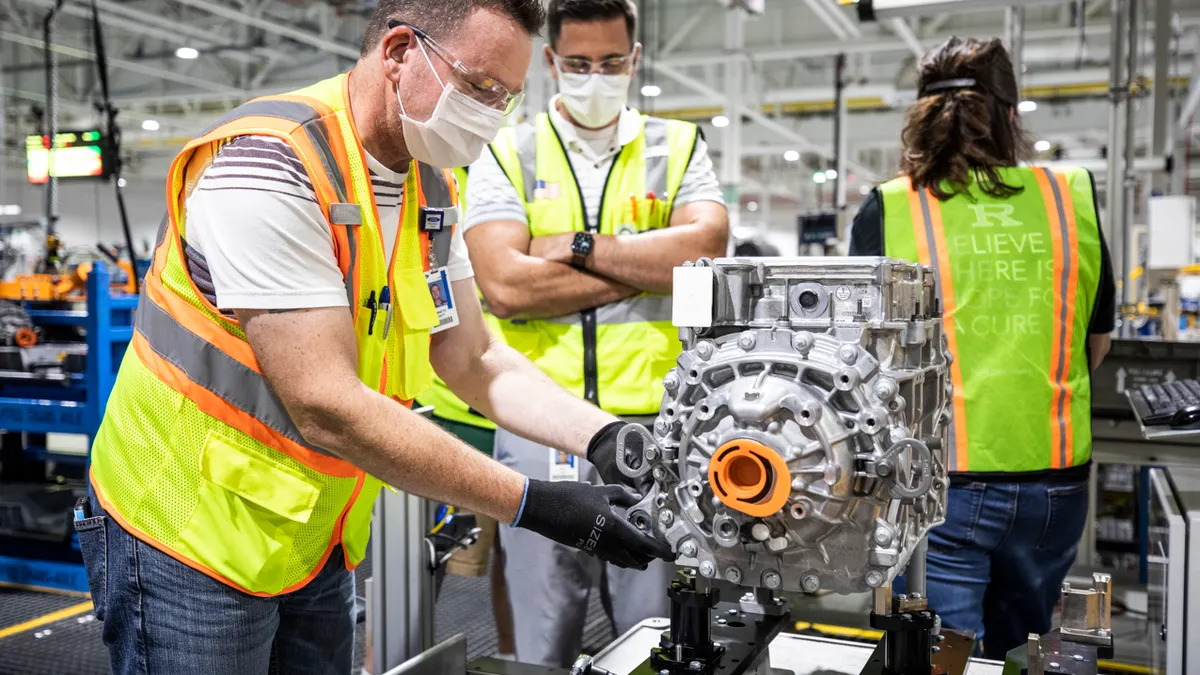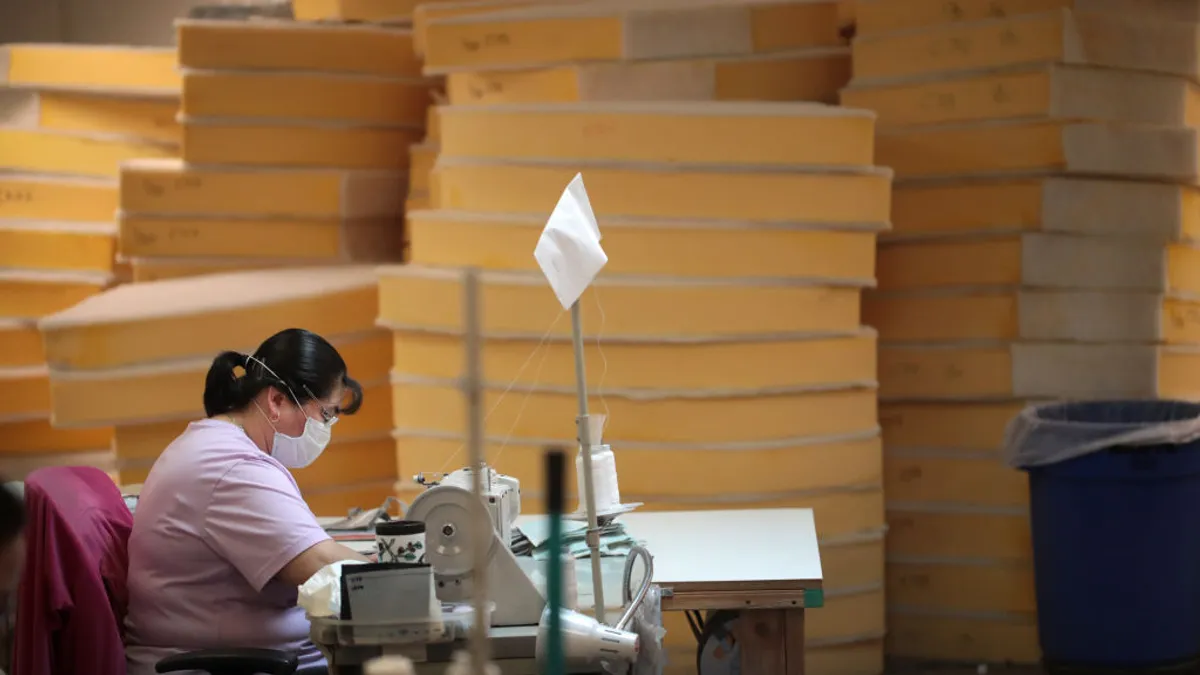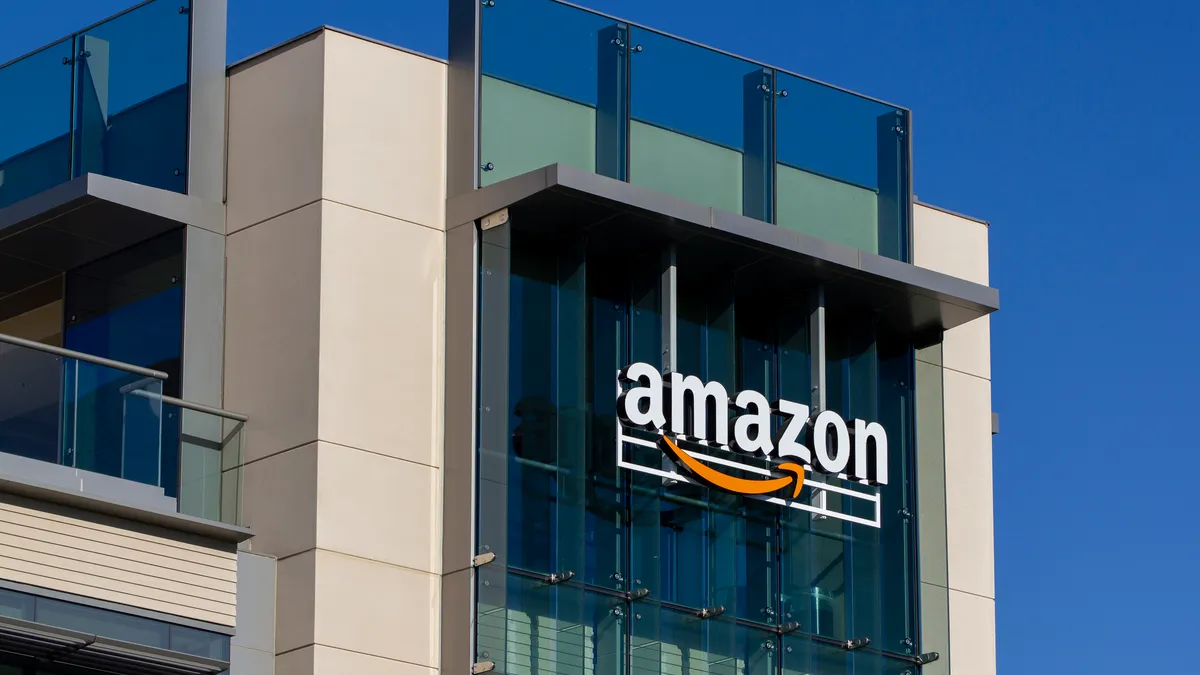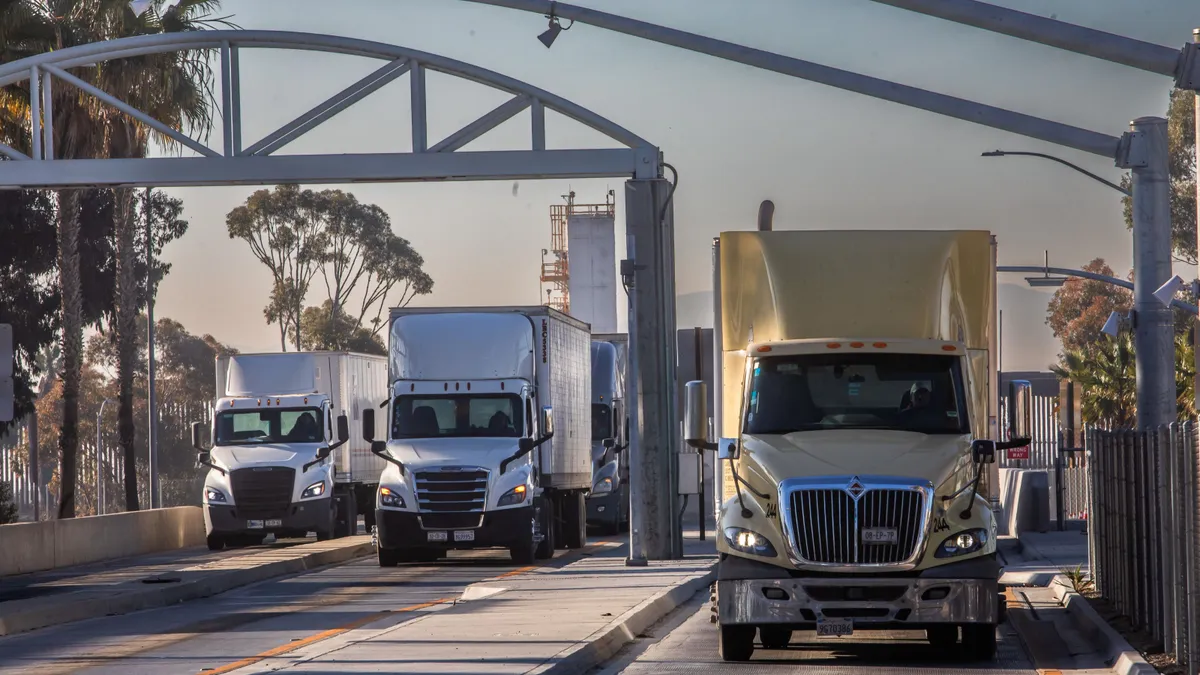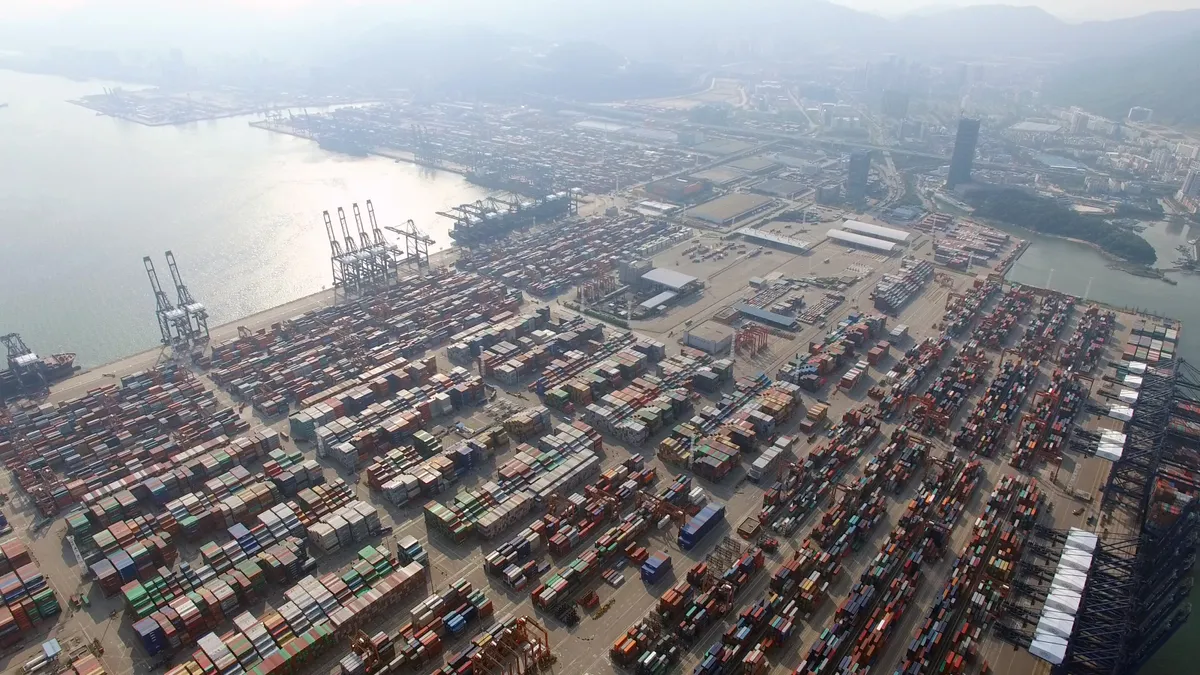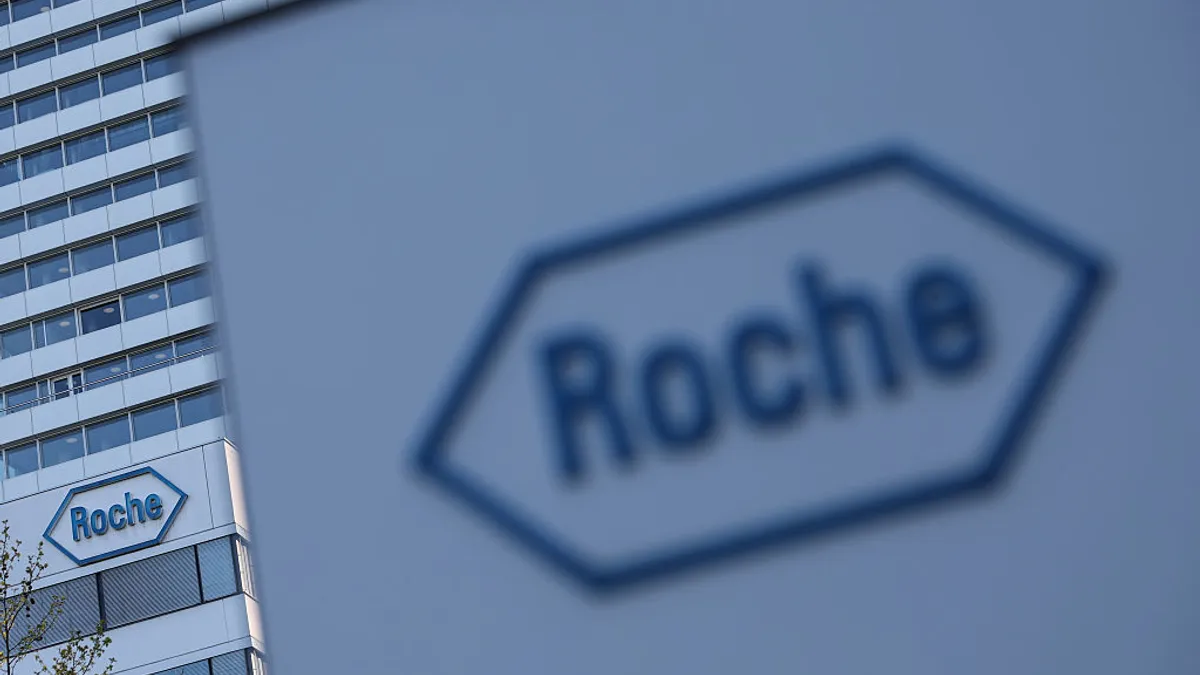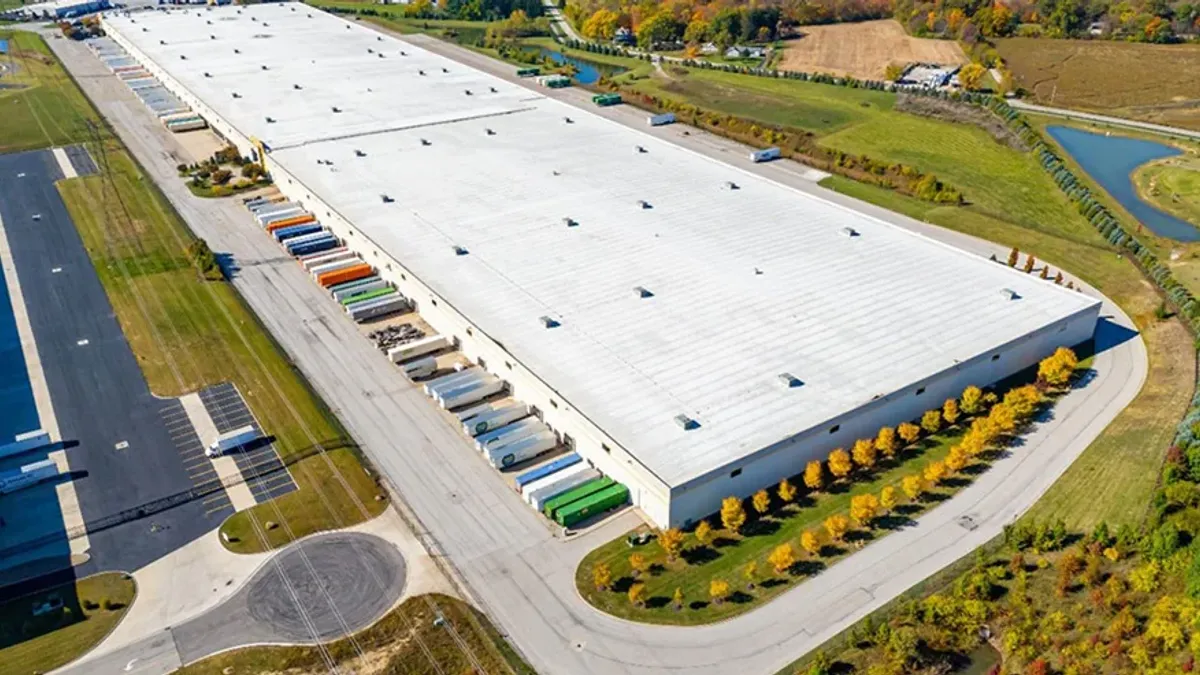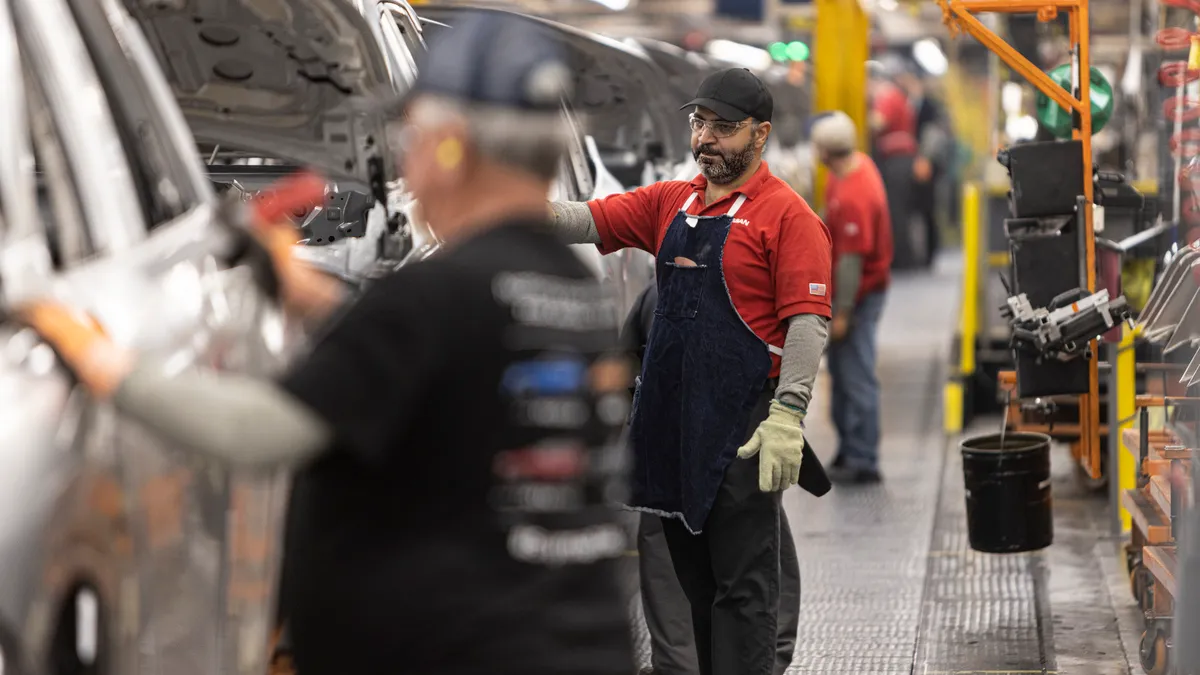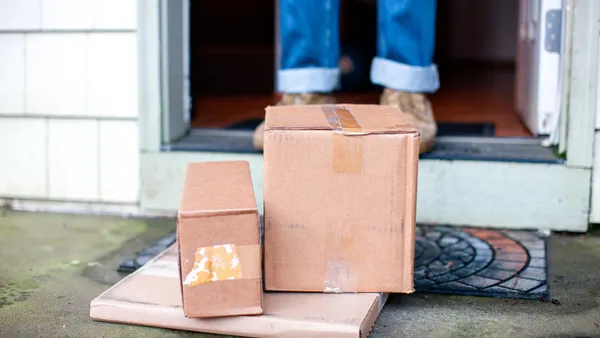During the recent holiday shipping frenzy, the average consumer likely overlooked an important element of e-commerce: the shape of their packages.
When it comes to the efficient movement of goods through the supply chain via e-commerce channels, squared-off designs like cardboard boxes reign. Some say that form is better for marketing and transportation emissions reduction efforts, too.
In certain cases, brands are transitioning away from flexible packaging and toward rigid square or rectangular shapes; sometimes they’re making a return to boxes after using other formats for a while. Performance, efficiency and sustainability factors play a role in the choice toward “squarification;” flexible packaging can be prone to getting squashed and moved around in transit more than boxes.
But there's a key reason box-shaped packaging currently dominates e-commerce: robots.
“E-commerce is becoming increasingly automated,” Leon Nicholas, vice president of retail insights and solutions at Smurfit Westrock, told Packaging Dive. “Robots generally do better with things that are squared and perfectly dimensionalized.”
The robots used in e-commerce fulfillment typically pick up objects via suction, and they generally aren't able to grab flexibles as well as boxes.
“It's very, very difficult to utilize mailers or any kind of really flexible packaging material with automation. Automation always works best when something is sort of rigid and square or rectangular," said Greg Walls, vice president of revenue at cartonization software company Paccurate.
Squarification isn't just a design consideration for secondary packaging, either. Some brands are transitioning to rigid square or rectangle packaging as more products ship in their own containers, known as SIOC. Consumer products like snacks or pet food that traditionally used flexible packaging in some cases are showing up in boxes, which are ideal for SIOC. The same is true for certain products that primarily used to be sold in bottles or jugs, such as wine and laundry detergent.
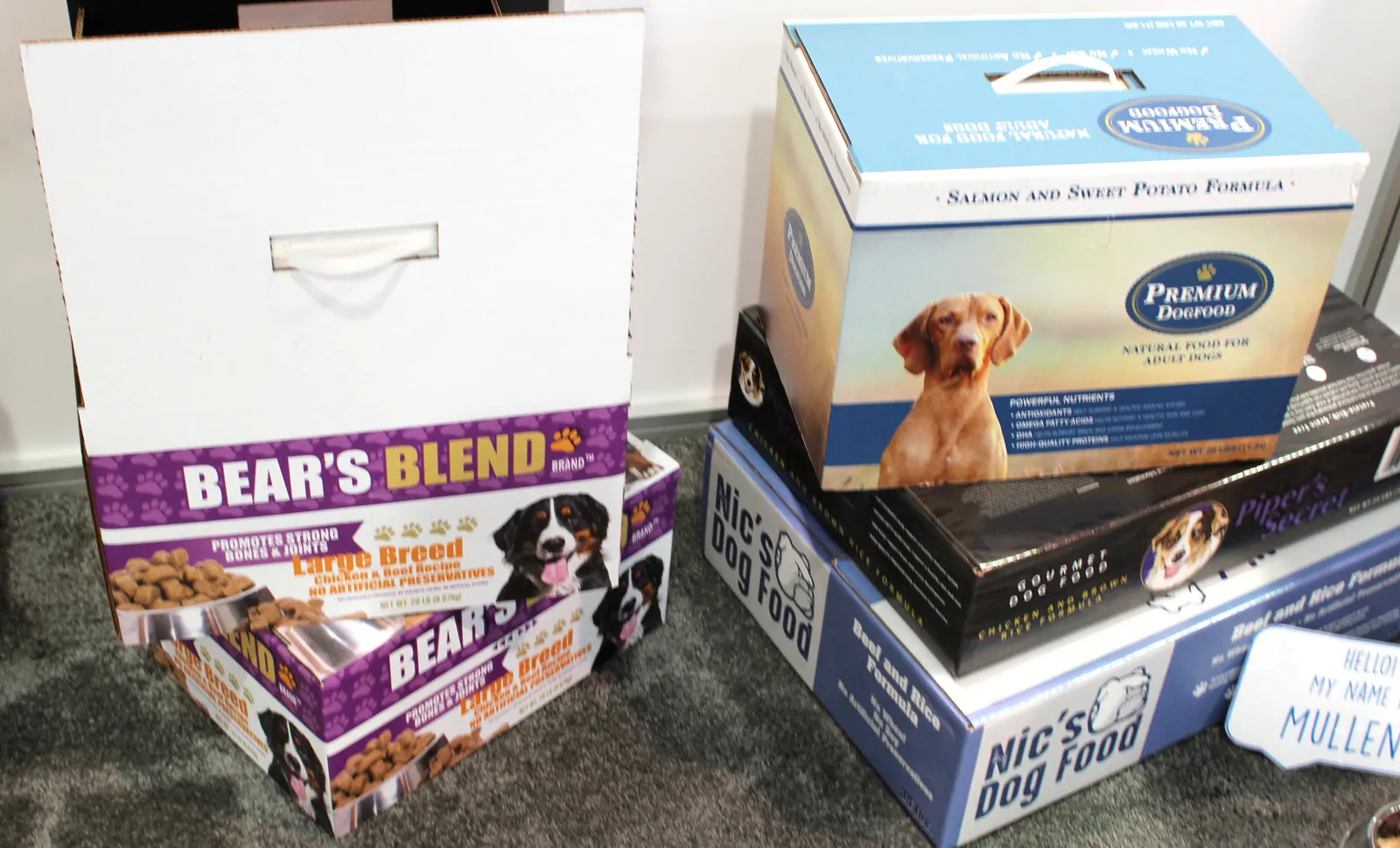
Plus, for primary packaging, “we’ve seen some very interesting shifts to square packaging in the vitamin and mineral category, particularly by new brands like Olly and Natrol, and specifically in the gummy segment,” said Ron Sasine, advisor to Kearney's Product Excellence and Renewal Lab and former senior director of packaging for private brands at Walmart.
Square shapes also are preferred for omnichannel packaging, or “packaging that does just as well on a shelf as it does on a pallet as it does in a locker or picked by a robot,” Nicholas said. This is valuable as more retailers fulfill e-commerce orders by pulling products to ship from their brick-and-mortar back rooms, instead of using separate distribution centers.
“That is going to be what eventually permits those large retailers to put products in people's hands in the shortest amount of time, at the fastest ease of distribution,” Sasine said, noting this model’s use at Walmart, Kroger and Whole Foods retail stores.
Data points to e-commerce continuing to boom: A quarterly report that RaboResearch released in December showed that adjusted e-commerce sales in North America comprised 16.2% of total retail sales and called e-commerce “the most important driver for containerboard demand.”
That same month, market research company Smithers forecasted that corrugated had the highest growth rate among e-commerce packaging, with a 9.5% compound annual growth rate through 2029. This follows Smithers reporting in 2023 that corrugated is the most common type of e-commerce packaging, representing 80% of the market.
Plus, large retailers and e-commerce companies increasingly are automating their operations. These factors will increase reliance on squared-off packaging — instead of round, irregularly shaped or flexible options — in the coming years, sources say.
“Automation, by its very nature, prefers rectangular prisms,” Sasine said. “Geometry that favors automation is going to be more important in the future. It will become a big driver of packaging design for both primary and secondary formats.”
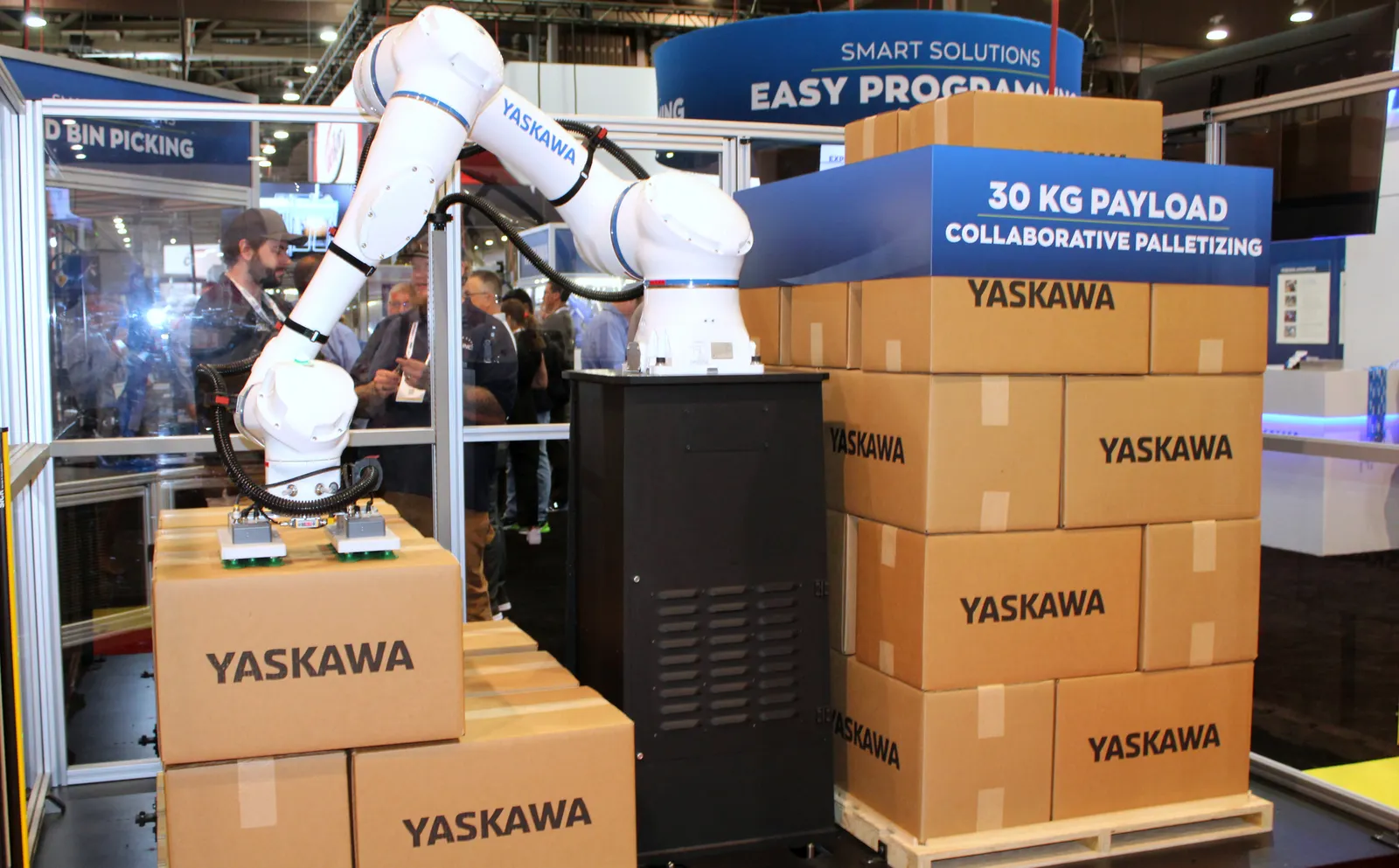
Are you dense?
Despite some companies’ preference for squared-off packaging, “you don't want to have a square with air,” Nicholas said. There’s an industrywide push for package and shipment densification, or what Nicholas dubbed "the war on air," to improve shipping sustainability, efficiency and cost effectiveness.
Dimensioning, or calculating the weight and volume dimensions of a package, factors into supply chain planning, optimization and costs.
“FedEx and UPS penalize you if you have a lot of air in your package. ... That's more or less the intent of what they call dimensional weight,” said Paccurate’s Walls. “If you ship less air, you're wasting less money and you're wasting less material.”
Squared-off packaging often allows for greater shipment density — as long as it fits rather snugly to the product. That's where rightsizing enters the equation.
While hand-packing stations at distribution centers typically have a limited stock of different box sizes on hand, rightsizing equipment forms the minimum-sized box required around a product. The concept also reduces or eliminates the need for void fill.
“Rightsized packaging is definitely a trend that we're seeing. ... Shipping costs and fuel costs continue to increase, so there's more and more focus on this type of packaging initiative,” said David Gray, senior vice president of sales at automated packaging system supplier Sparck Technologies. “The cost savings is the number one driver for people who adopt our solution. But sustainability is also a very important aspect.”
Rightsizing is “definitely more efficient during shipping, because you're not shipping as much air — you're able to fit more boxes into your truck. There's more carbon reduction that way,” said Xinnan Li, packaging and logistics analyst at RaboResearch.
Rightsizing also can be a way to reduce the amount of packaging material used, which aligns with numerous brands’ and e-commerce providers' sustainability goals. For instance, Amazon has repeatedly touted its ongoing efforts for lightweighting and packaging reduction.
But not all box rightsizing efforts produce the full intended benefits. In some cases, automated packing machines fold over, rather than cut off and recycle, excess box material during rightsizing, Li explained. The doubled-up box walls still produce a smaller-sized box that improves shipment density, but they don't fully support material reduction efforts. Therefore, rightsizing’s impact on “corrugated usage is not as big as people previously thought” when looking at the square footage of box material used, Li said.
Flexibles aren’t being squeezed out of the marketplace, though. Automation is advancing to allow robot pickers to be faster and more precise, including with grabbing flexible or round objects. And plenty of companies are turning to flexible packaging — either plastic or fiber — instead of rigid boxes to reduce the overall amount of packaging material they use.
Those secondary packaging solutions still are only used for a subset of e-commerce shipments — such as mailers for clothing or small items — and boxes continue to lead the space, sources say.
“I definitely think the poly bags are going away. We are seeing people looking to move into cardboard mailers,” Walls said.
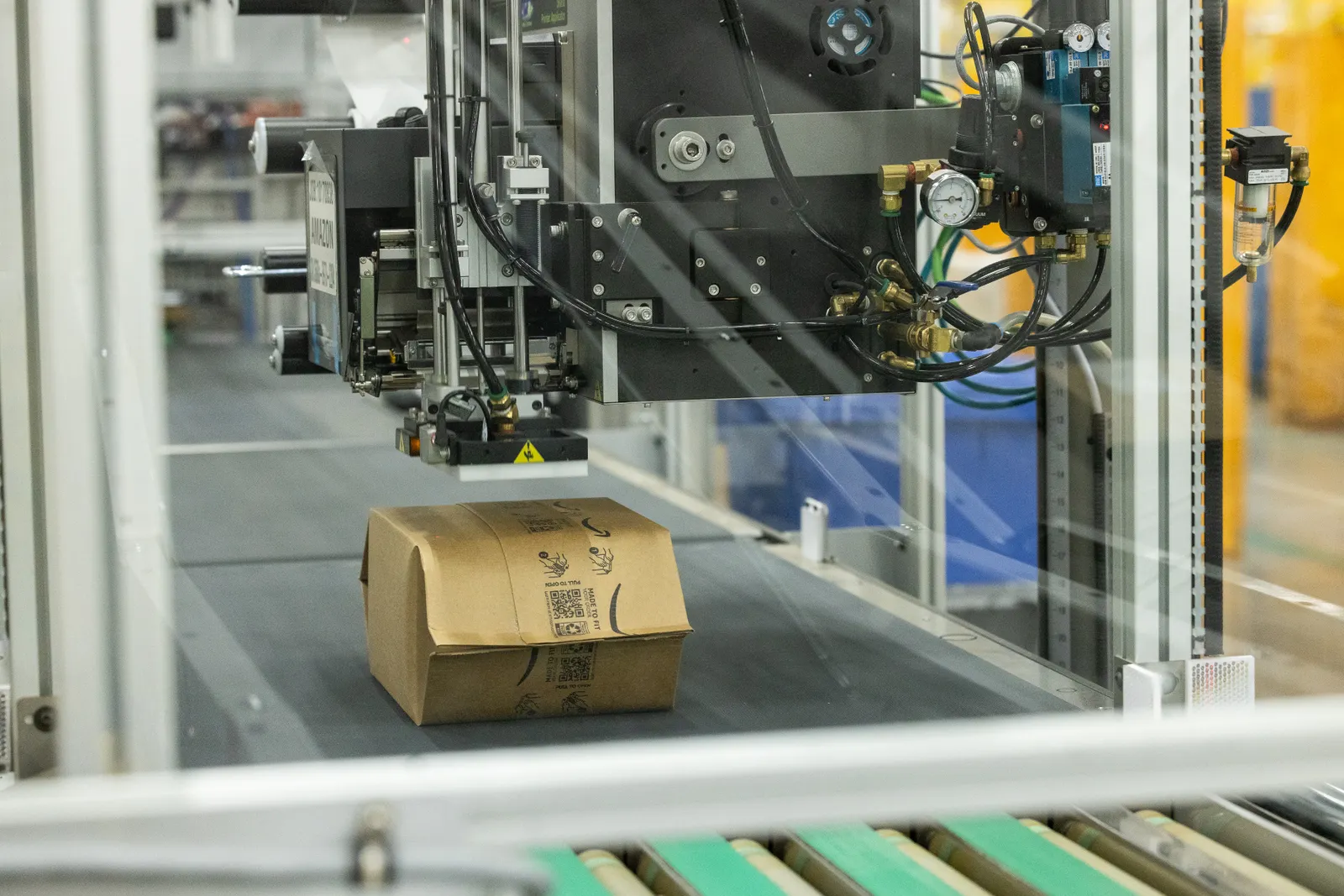
Marketing modifications
Switching from rounded to squared-off primary packaging can also bring marketing benefits. At a basic level, more messaging is visible on flat panels instead of round packaging. Consumers respond differently to various packaging shapes, too.
Sasine said he was previously involved with packaging research that concluded it would be more efficient and sustainable to transition the industry standard of tall, narrow cartons to those that are shorter and more squat. However, the consumer “interprets tall as value driving, and short as a lesser-value product,” he said.
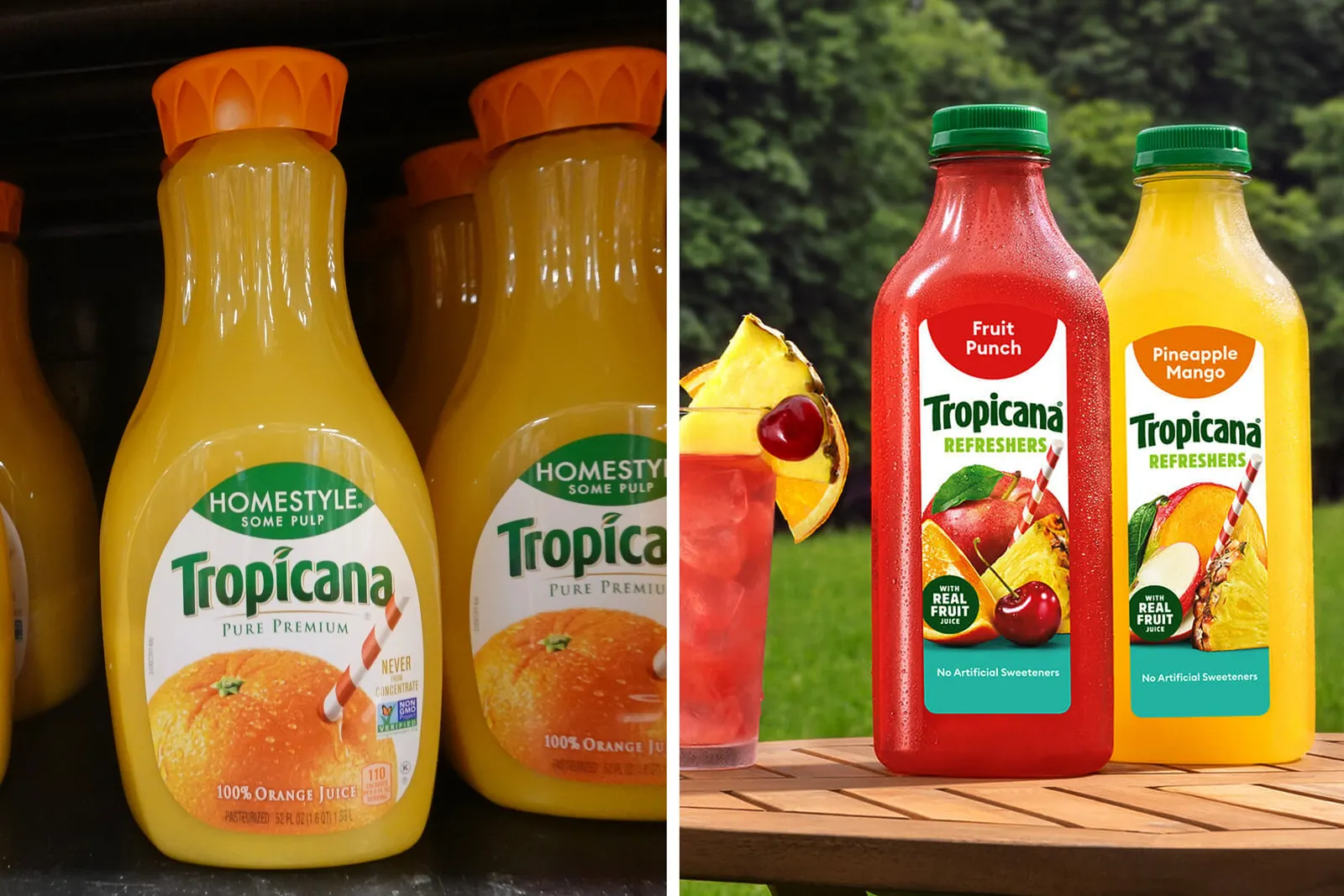
Sometimes, consumers view shape changes as a sign of shrinkflation, Sasine said, citing the recent backlash over the new juice bottle shape Tropicana introduced in 2024, which is more rectangular than the previous, signature curvy version. While the standard bottles did decrease in size from 52 ounces to 46 ounces, Tropicana said it lowered the manufacturer’s suggested retail price accordingly.
“Getting the consumer to understand what a format change means and why it's beneficial is, at the end of the day, a critical component,” he said. “Without the consumers’ willing adoption of the innovation, you'll eventually see the brand owner go back to something that the consumer can accept and understand."
Because greater density results in reduced packaging sizes, "you're looking at a smaller billboard" for on-pack branding and messaging during certain design switches, Smurfit Westrock's Nicholas said.
“Therein lies part of the tension,” he said. “It requires testing to ensure shoppers are still engaged.”
That being said, expert predictions overwhelmingly indicate the square isn't going anywhere for e-commerce packaging.
“Will we see more square formats? Absolutely,” Sasine said. “There's a lot to be said for three-dimensional squaring.”



